27 Fascinating Facts About Rattlesnakes (With Pictures)
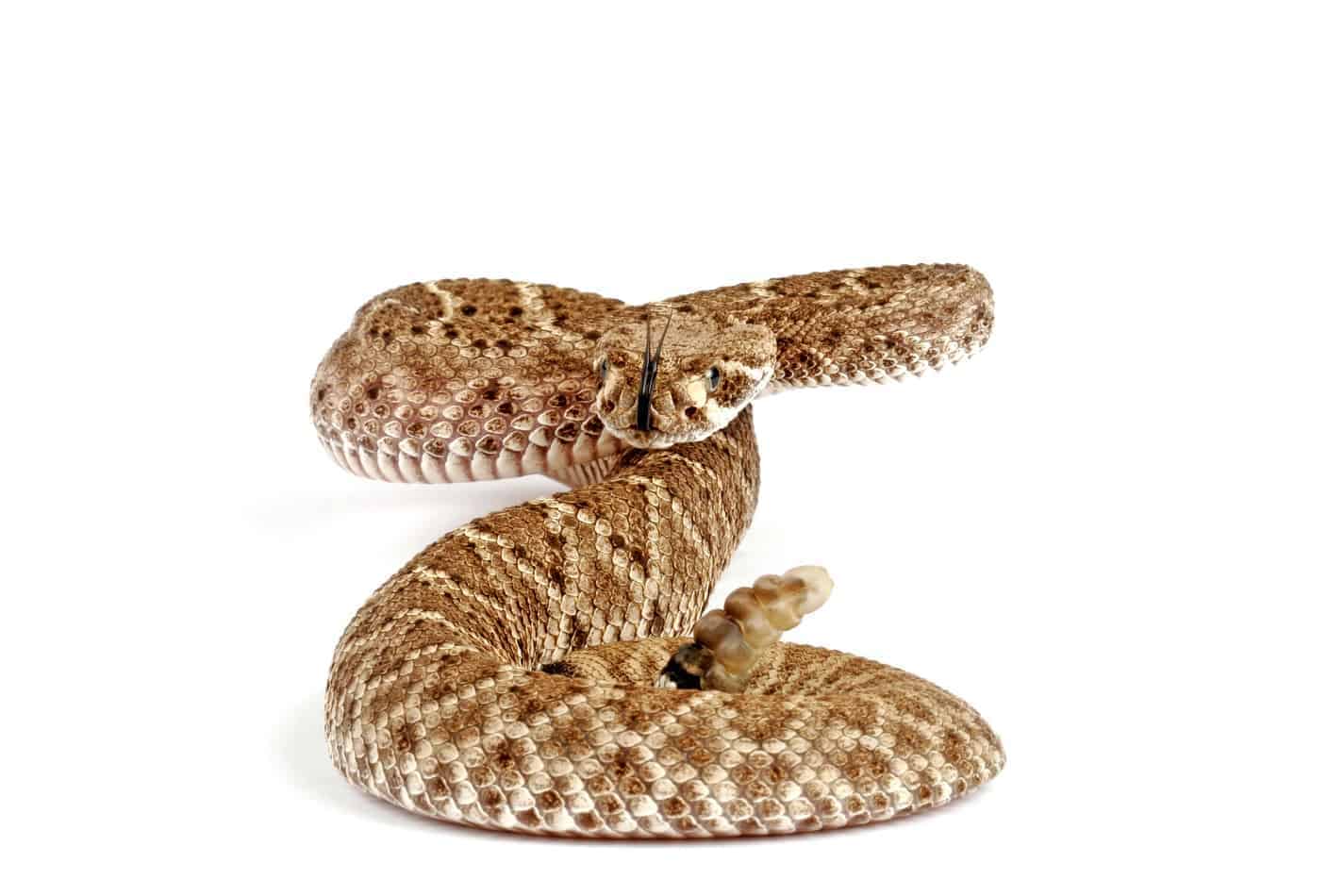
Perhaps the most well-known snakes in America, rattlesnakes are, in one word, fascinating. From overlapping defense mechanisms to their high adaptability, these snakes certainly deserve all the publicity and stories that involve them. So what makes these snakes fascinating? Well, I was wondering the same thing and let me say that now I understand why these snakes are so fantastic. Here are 27 fascinating facts about rattlesnakes.
1- Rattlesnakes’ Rattles Are Made of Keratin
Rattlesnakes receive their name from the rattle that lies at the end of their tail. These rattles are made out of keratin which is the same substance that our fingernails are made out of.
Each rattle is comprised of several rings of keratin that are formed after each time the snake sheds its skin.
In this manner rattlesnake’s rattle continues to grow with each subsequent shedding of their skin. These rattles are used by the snake to scare off predators and warn predators that they are willing to strike if they don’t back off. It is because of this that when you hear a rattle you want to be very careful as most rattlesnake bites are caused by someone accidentally stepping on the snake.
2- Rattlesnake Rattles Are Empty
Rattlesnake rattles are empty. That maybe a little difficult to understand as mechanically the rattles that we give to our children or that appear in toys are all made by placing small balls inside of a generally hollow object, but rattlesnakes’ rattles don’t work that way.
The iconic sound of the rattlesnake’s rattle is caused by all the layers of keratin that have been left behind through shedding. You combine all these dry hard layers with an insane speed of 50 shakes a second and you get that hissing rattle of the rattlesnake.
This is why you don’t want to mess around when you hear this sound. You aren’t simply causing the snake to notice you; it starts violently vibrating at you too. So beware.
3- It is a Myth That You Can Tell the Age of a Rattlesnake by the Rings on Its Rattle
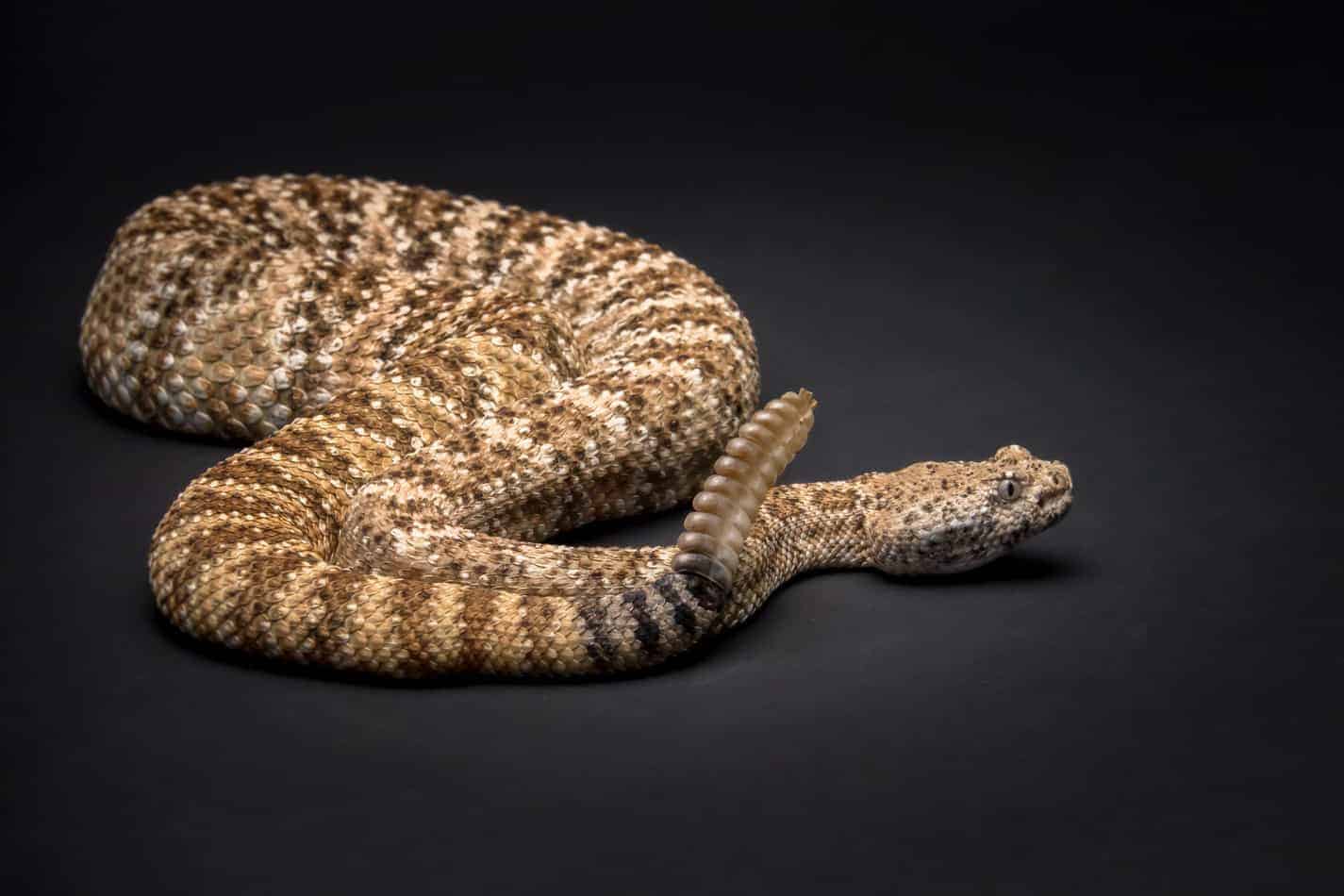
There is a common belief that if you can count the number of rings on a rattlesnakes rattle that you will be able to tell just how old it is, similar to the tree ring belief. This is not true in rattlesnakes.
First of all, you never want to get that close to a rattlesnake if it can be helped. Second, the rings on
Since rattlesnakes can shed multiple times a year, the rattlesnake is often much younger than its rattle would lead you to believe.
Some rattlesnakes shed 3 times a year. So it is safe to assume that this myth is wrong much more than it is right. Especially as a snake will shed its skin faster depending on how fast it grows and since you grow the most when you are young, the rattlesnake will get several layers on their rattle at a relatively young age.
4- Rattlesnakes Are Venomous
Besides their rattle, the rattlesnake’s next most pronounced feature is their venom. Rattlesnake venom contains hemotoxin which affects tissues and disrupts the circulatory system through the destruction of blood cells and skins cells.
The venom can cause internal hemorrhaging as the hemotoxin will affect organs in the body and start to eat away at them.
If you are bitten you will want to seek medical attention immediately.
In the meantime keep the place of the bite lower than your heart. This will slow down blood flow. Additionally, you will want to wash the area with soap and water and remove any jewelry such as watches, rings, bracelets in the area around the snake bite.
5- Not All Rattlesnake Bites Are Venomous
Now before you go rewriting your will after a snake bite, it is important to understand that not all rattlesnake bites are venomous. You should still seek medical attention immediately because it may be venomous, but some bites are not venomous.
These bites are often called dry bites and it is simply caused by the snake not injecting their venom into the person they bite. There is a 20 to 25 percent chance that the bite of a rattlesnake will be a dry bite.
Keep in mind that a rattlesnake uses its bite as a defense mechanism so, under a circumstance where it is defending itself, such as when it is stepped on, it is more likely to release venom.
6- Rattlesnakes Are Not Colorful on Purpose
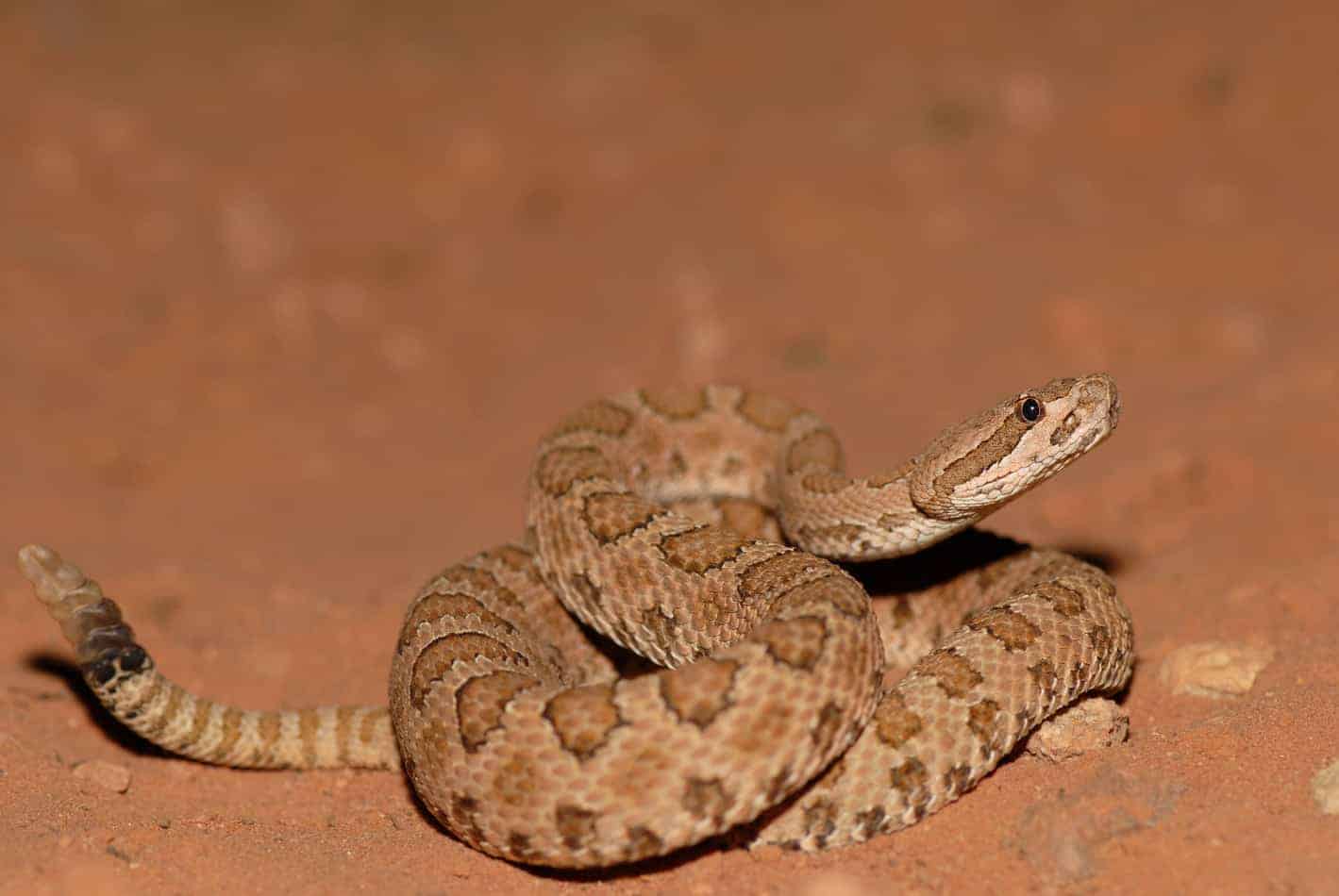
Now before you go laughing off the idea of stepping on a rattlesnake it is important to understand that rattlesnakes are purposely not colorful. They maintain rather bland earthy tones to blend in with their environment. This use of camouflage is primarily used to catch unsuspecting prey.
Rattlesnakes are ambush predators so the extra stealth of their lack of colored bodies adds a large bonus in that field. However, their camouflage is contrasted by their rattle. Since their rattle is a way for the snake to defend itself from predators a rattlesnake will likely rattle at a human before it strikes. Unless the snake is surprised in that case it will strike first and rattle later.
So watch
7- Rattlesnake lay Between 8 to 10 Babies a Clutch
Snakes are rather well known for having quite a few babies born each clutch but rattlesnakes have some of the highest birth consistency rates with the average number of babies a clutch being 8 to 10. This is pretty average for snakes but several snakes have large ranges that rattlesnakes do not. These babies are independent at birth and will move on from their mothers as soon as they can.
8- Rattlesnakes Give Live Birth to Their Babies
Some snakes lay eggs, but that is not the case for rattlesnakes. Rattlesnakes give live birth to their babies. This is done through the mother rattlesnake keeping the eggs of her young in her body until they have hatched at which point the babies are set free, ready to leave and explore the world on their own.
This way of giving birth is not unique to the rattlesnake but it is not common either. Several other snakes such as the boa constrictor give birth in the same fashion.
9- Baby Rattlesnakes Are More Dangerous Than Adults
This may seem backwards, but it is all too true that baby rattlesnakes are more dangerous than their adult counterparts. This is primarily due to two reasons. The first is that baby rattlesnakes have not developed their rattles yet.
It takes at least two sheddings before there are two layers of keratin to rub against each other and even then with a small number of layers the rattle still may either not work or be very quiet. So baby rattlesnakes don’t have the means to warn predators or humans with their tails. The second reason comes from a lack of control.
Adult rattlesnakes release their venom in a way that it comes out primarily as hemotoxin but baby rattlesnakes have less of an ability to control how much and how potent their venom is. The result is a toxin that is filled with more neurotoxin than hemotoxin which causes the venom to be considerably more deadly.
10- Rattlesnakes Hold Their Poison Below Their Eyes
Just below and behind the eyes of the rattlesnake is the location of where the rattlesnake holds its venom. There are three cells that are involved in the process of the venom’s capture and release. Basal cells, conical mitochodria-rich cells, and secretory cells. The result is a venom that is directly stored behind the fangs.
The venom does change over time as it is stored, as it has been measured that some parts of the toxin do not exist at the production of the venom but appear 3 or so days later as the venom matures.
11- Rattlesnakes Can Bite Even After Being Beheaded
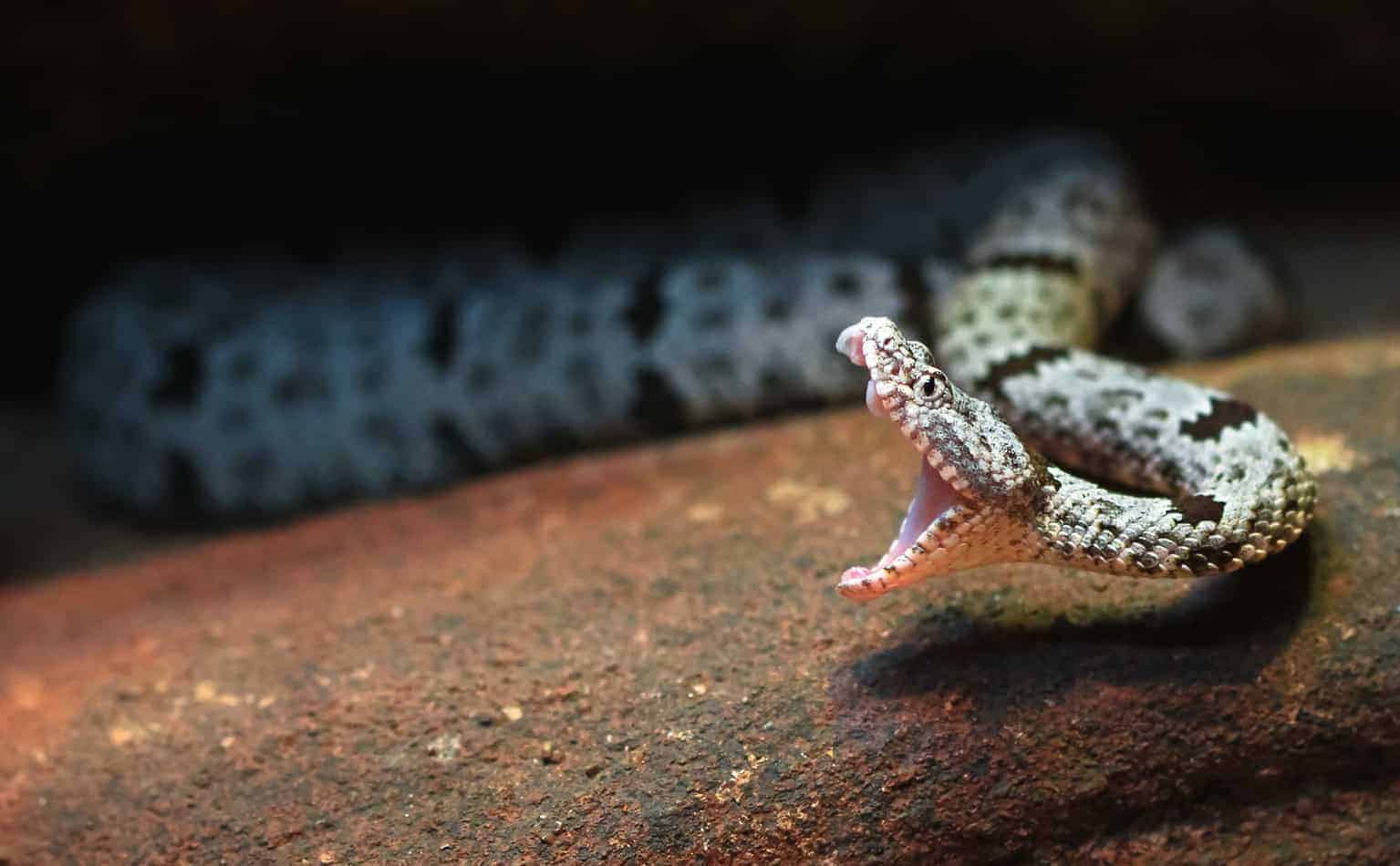
Umm yeah. The fact kinda says it all here, so I’ll just confirm that one, this is true and two, that there have been fatal bites as a result of a beheaded rattlesnake’s bite.
Following the same logic that a chicken will run around if you chop its head off, then a snake will still bite if you cut its head off so be careful. Just because its head isn’t attached to its body doesn’t mean that it can’t take the poison from just below or behind its eyes and bite down with their venomous attack.
12- Rattlesnakes’ Chief Predator is Another Snake
The king snake, so named for its ability to eat other snakes, is the main predator of rattlesnakes. The king snake has a natural immunity to rattlesnakes’ venom which allows them to move in fearlessly and kill opposing rattlesnakes through constriction.
Rattlesnakes have grown so accustomed to this relationship with their king snake enemies that when a king snake does enter the area around them the rattlesnake will often flee as soon as they smell the king snake.
If a rattlesnake does encounter a king snake, it
13- Rattlesnakes Other Predators Are Birds of Prey And Mammals
Among the list of predators to the rattlesnake besides the king snake are:
- owls
- ravens
- coyotes
- foxes.
It is the general rule of nature that something large will eat something smaller than it. There is no exception here, well king snakes are an exception, but otherwise no exceptions. The rattlesnake, as such, attempts to defend itself with its rattle to scare predators away. Often these fights come down to who is faster.
The rattlesnake attempts to bite their predator before the predator can grab them in a position where they can no longer bite. Birds in this manner have the advantage as they will swoop down and hold the snake in their talons and swoop away. There is little the rattlesnake can do about that.
14- Rattlesnakes are Carnivores
Rattlesnakes diets consist of mostly rodents, small birds, and lizards. Their main tactics for achieving this is ambushing their predators. Using their stealthy camouflage the snakes can easily sneak up on prey and devour them. This is one of the reasons that a snake’s rattle isn’t filled with anything as the design of their rattle allows for them to move without a sound and allows for ambush tactics to be used frequently.
15- Rattlesnakes Have Vertical Pupils
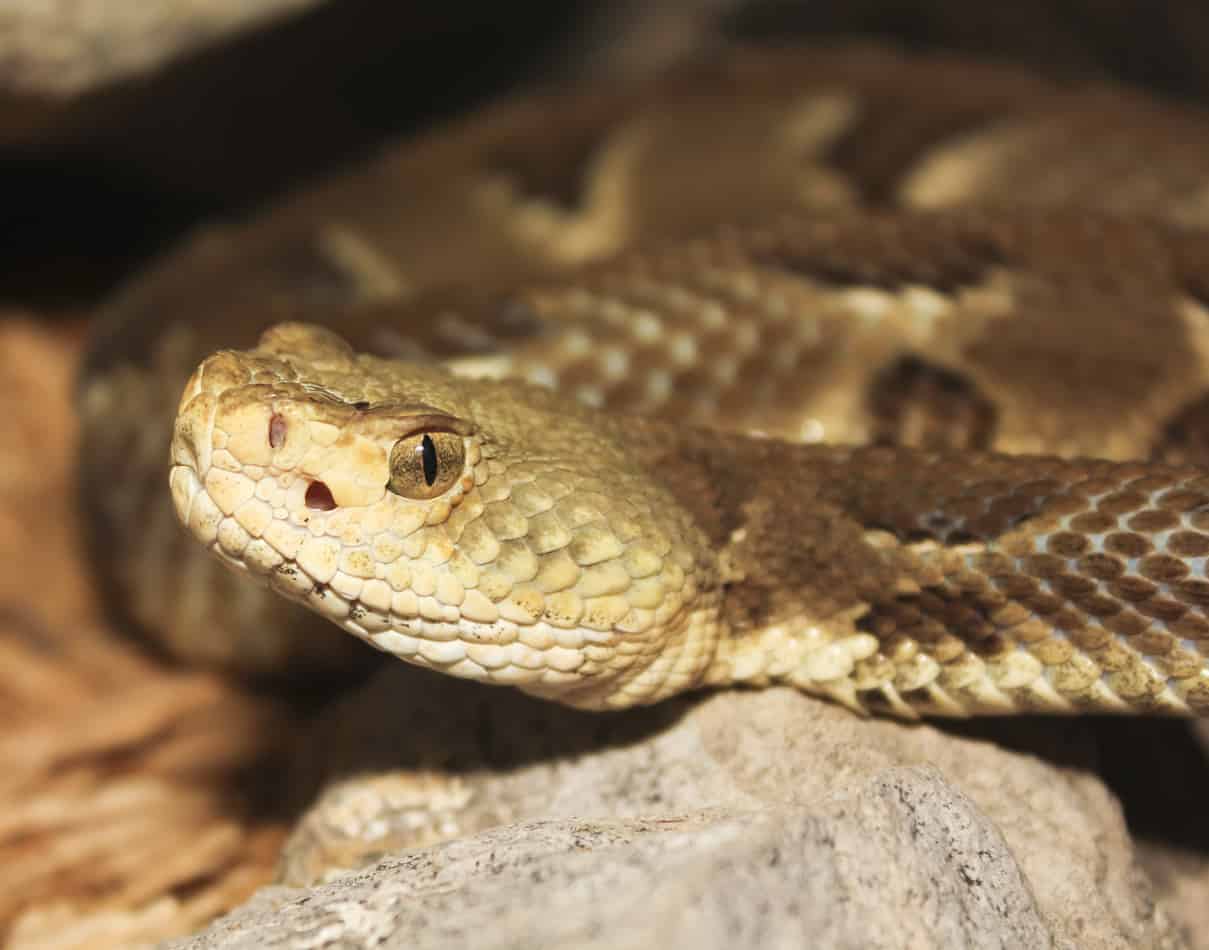
Among several other advanced senses that rattlesnakes have their pupils are vertical. This nature of their eyes allows them to see in the dark exceptionally well. Because of this rattlesnakes are often nocturnal ambush predators that set their traps to hunt creatures at night and then strike in the morning.
This is an adaptation that several forms of cat have as well. A rattlesnakes sense of sight isn’t its main sense though but it does provide a nice boost to the snakes’ inventory of unique senses.
16- Rattlesnakes Can Sense Heat
This trait is seen throughout many cold-blooded creatures. Since they are exothermic and therefore require heat from sources other than their body, it is an important part of a rattlesnake’s sense inventory to be able to sense the heat of other creatures. Rattlesnakes do this through use of scales around the nostril of the rattlesnake. They use this sense to hunt their prey, adding to just another sense that makes the rattlesnake so efficient at night.
17- Rattlesnakes Can Smell Chemical Trails
So one rumor out there about several types of snake, rattlesnakes included, is that they cannot smell without their tongue. This is not true; snakes can smell with their nostrils, however, they can use receptors on the roof of their mouth to sense chemical trails.
Since this sense is most similar to smelling it is often roped into a snake’s ability to smell, however, it is not the only way a snake smell nor is it truly smelling. This is the rattlesnakes’ primary form of predator-prey identification and is used frequently in the hunting of prey and the avoidance of predators.
18- When Cold, Rattlesnakes Will Stay Close Together
Since rattlesnakes are exothermic, in order to keep themselves warm in the winter or in any other cold environment, the rattlesnakes will enter a state of brumation which is a form of dormancy that is similar to hibernation. In this brumation the snakes will form into swirly balls and cuddle together to maintain their body heat.
Talk about a creepy sight that probably tops the list of Indiana Jones’s greatest fears.
19- The Largest Rattlesnakes Can Reach 8 Feet in Length
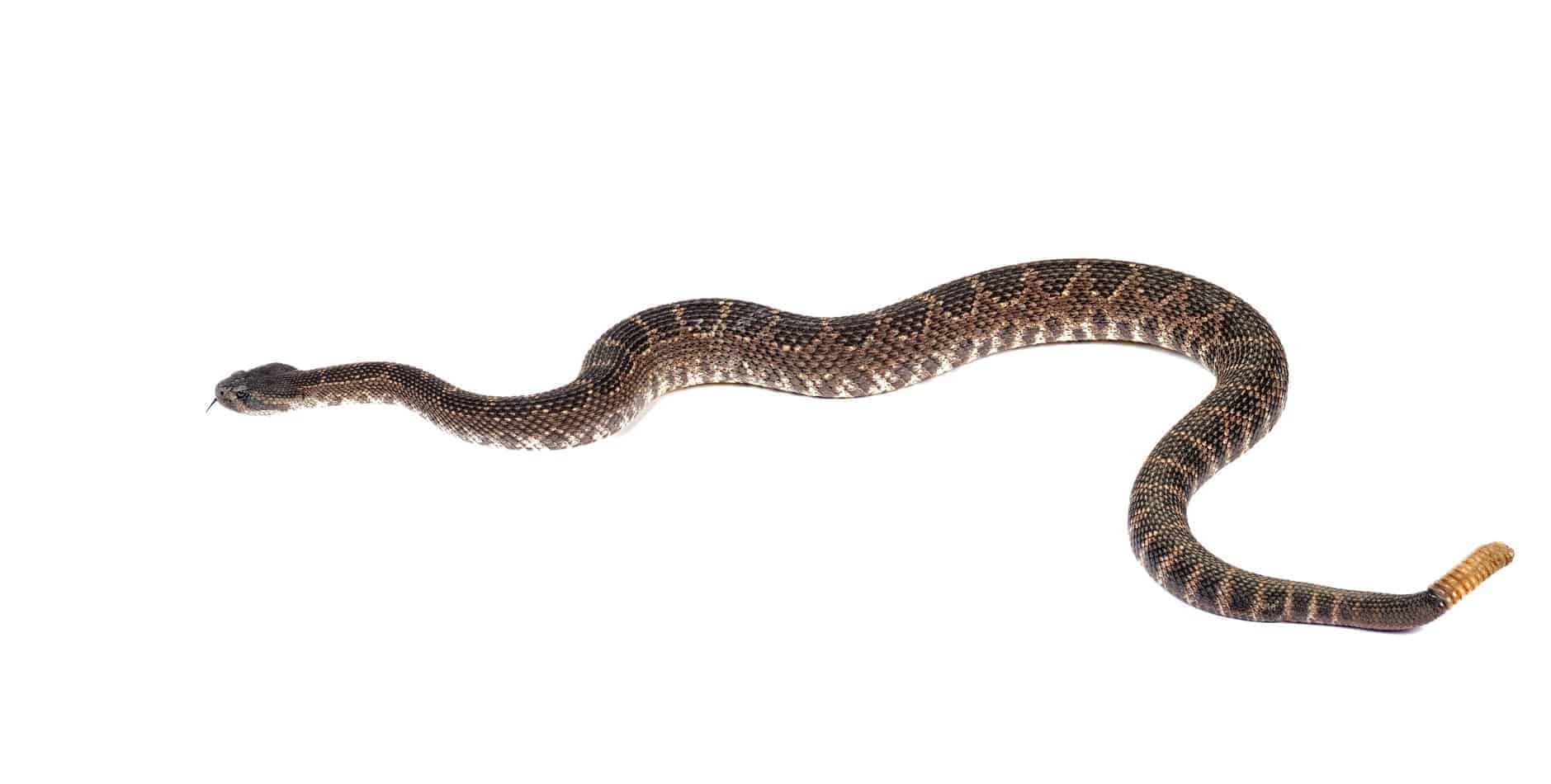
There are about 36 species of rattlesnake and 50 subspecies. The largest of these species is the eastern diamondback rattlesnake can get to be 8 feet in length. On average a rattlesnake is 2 to 3 feet in length.
20- There Are 3 Endangered Species of Rattlesnake
This list includes the Santa Catalina Island Rattlesnake which is critically endangered, the long-tailed rattlesnake which is listed as vulnerable, and the Tancitaran dusky rattlesnake which is listed as endangered as they can only be found in one location.
Most of these snakes are decreasing in number due to a decrease in habitat size due to the urbanization of several of their habitats or habitats of their predators.
21- Rattlesnakes Belong to the Snake Family of Pit Vipers
Pit vipers is a classification of snake that contains some of the most poisonous snakes in the world. These include the rattlesnake, copperhead, and cottonmouth. The reason that snakes are placed in this category are the pit shape between the eyes of the snake.
22- A Rattlesnakes Scales Overlap
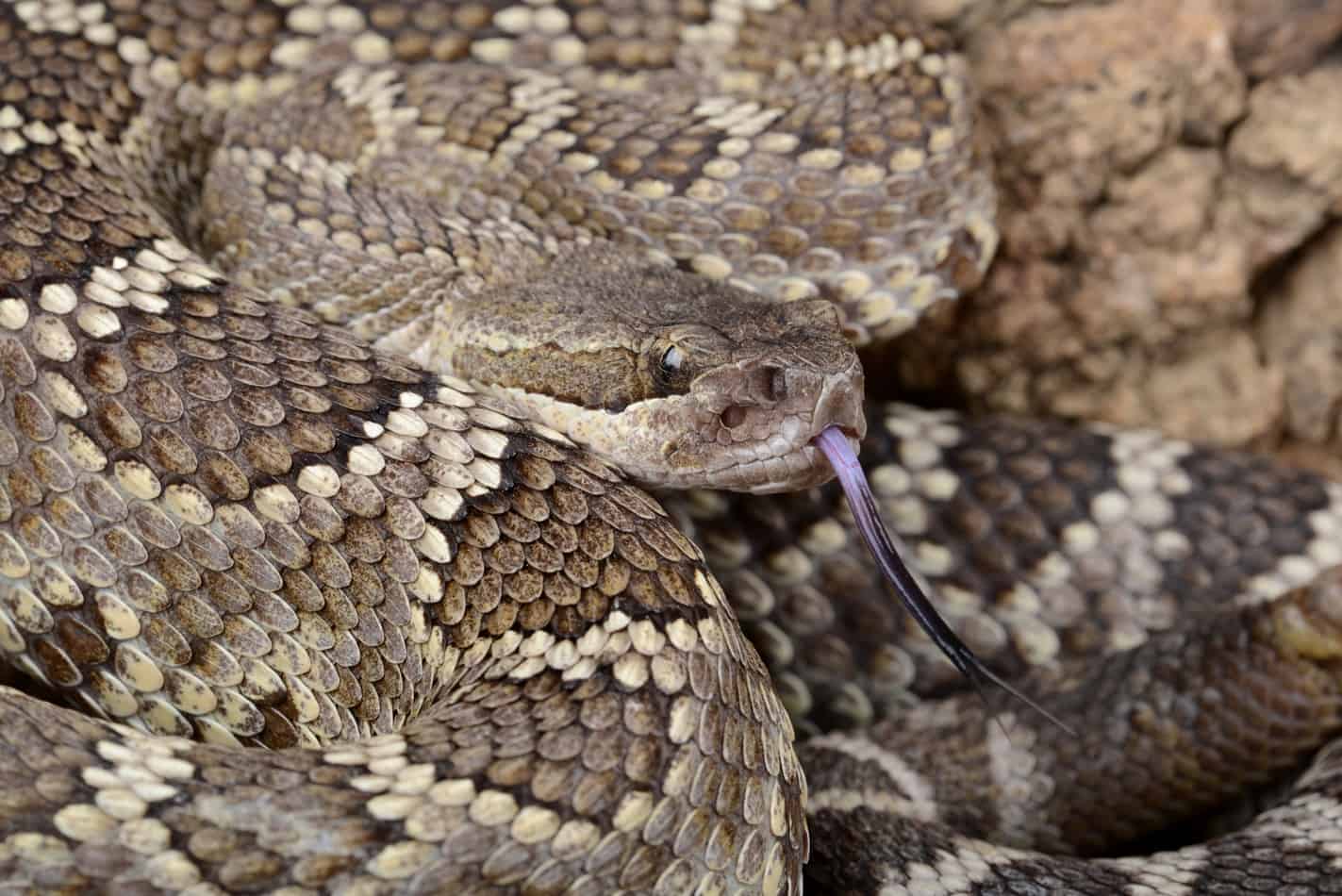
These overlapping scales are used as a form of protection against several threats such as dehydration and physical trauma. In this manner, snakes are able to retain water better through having their scales. Additionally, the snakes’ scales are used to provide a defense against predators as they are thick and difficult to pierce.
On top of the protective qualities of their scales, they match perfectly with the rattlesnakes mobility providing for fast overland travel by slithering. It also keeps the snake silent as it doesn’t have much to be caught on things, and can be used to propel the snake forward by grabbing terrain and pulling the snake forward.
23- Rattlesnakes Are Good Swimmers
One of the advantages of slithering as a source of overland travel is that it is strongly usable as all-terrain travel. As such a rattlesnake can move very quickly in water by darting back and forth across the top of the water rattle snakes are able to catch reptile, amphibious, or even aquatic prey. Additionally, a rattlesnakes camouflage works really well in the water.
24- Rattlesnakes Can Climb Trees
Rattlesnakes are all-terrain creatures which includes climbing trees. Once again their camouflage works great in these locations and they are incredible at slithering up and down trunks of trees to catch birds and squirrels that like to rest on the tree’s branches.
25- Rattlesnake do Hiss to Scare Off Predators
While the rattlesnake is better known for the sound of its rattle it will hiss to scare away predators. It is thought that this defense mechanism is overlooked due to the sound of their rattles being considerably louder but it serves the same effect. So if you see a rattlesnake hissing, it is not something you will want to have a conflict with as it is ready to pounce.
26- Rattlesnakes Will Return to Their Dens
Most snakes pack up and leave, having no interest of return. Rattlesnakes do not do this. They are likely to return to the dens that they have made their homes in. This is especially important in the winter month when rattlesnakes need to gather together for warmth as such snakes may travel miles to return to their dens.
27- Rattlesnakes Have Been Used as an American Political Symbol

The biggest example of this is
Related Questions
How quickly should you receive medical attention after being bitten by a rattlesnake? You want to get to a medical facility as quickly as you can after being bitten by a venomous snake. However, it is suggested that you get to one within 30 minutes. In order to increase this time you want to lower the bit wound to below your heart and apply a bandage that isn’t too tight to the area above the bite. This should slow down the progression of the venom’s flow through the body.
How far can a rattlesnake strike? You will want to stay as far away from a rattlesnake as you can. If you must near a rattlesnake, then it can only strike out the length of its body or so, so you generally are good so long as you don’t pass about 4 feet near it. But always take caution rattlesnakes are not to be taken idly.
Are rattlesnakes aggressive? Generally, a rattlesnake is not aggressive; however, they can become so if they are provoked. Otherwise, they will most likely ignore you. As an animal, it values its survival as a top priority. So if it thinks it is safe then there won’t be an issue. If it thinks it is in danger than you will want to alleviate whatever is causing the threat as soon as possible or else it will strike out at you.
